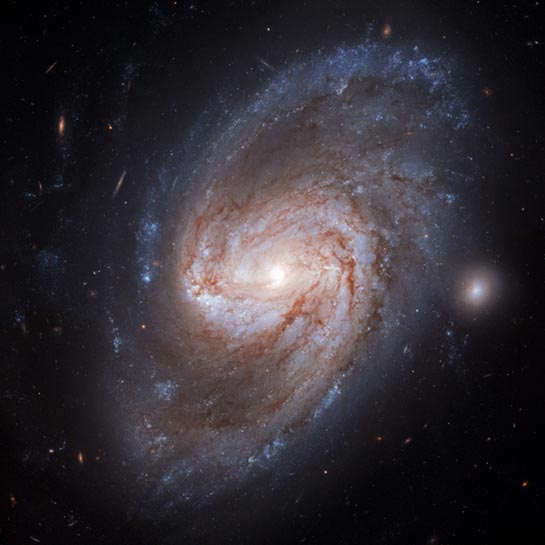
Barred Spiral galaxy
RA 11h 14m 10.81s Dec 48° 19' 5.48"
Ursa Major
100 million light years
11.1
2.7 by 2.1 arcmin
2.42 x 2.40 arcminutes
North is 153.0° right of vertical
ESA/Hubble & NASA, A. Riess et al.
May 4, 2020
ABOUT
THIS IMAGE:
In the forests of the night lies a barred spiral galaxy called NGC 3583, imaged here by the NASA/ESA Hubble Space Telescope. This is a barred spiral galaxy with two arms that twist out into the Universe. This galaxy is located 98 million light-years away from the Milky Way. It was discovered by William Herschel on February 5, 1788. Two supernovae exploded in this galaxy, one in 1975 and another, more recently, in 2015.
There are a few different ways that supernova can form. In the case of these two supernovae, the explosions evolved from two independent binary star systems in which the stellar remnant of a Sun-like star, known as a white dwarf, was collecting material from its companion star. Feeding off of its partner, the white dwarf gorged on the material until it reached a maximum mass. At this point, the star collapsed inward before exploding outward in a brilliant supernova.
Two
of these events were spotted in NGC 3583, and though not visible in this
picture, we can still marvel at the galaxy's fearful symmetry.